6:30 am March 26 I am finally beginning to organize my photos from our trip to Mexico. While doing this I have realized that I need to create a separate notebook that shows the photos I have taken of the birds we saw. In many cases this will involve a digital enlargement of an original photo. |
We arrived in Merida, Mexico in the early evening of February 11 after a 7 hour flight from Calgary to Houston to Merida. Larry and Mary Ann met us at the airport and then drove us to the unit that they had rented for a couple of months. The unit is on the north coast of the Yucatan peninsula, just off the coastal road at an area called San Bruno which is about 25 km east of Progreso, which is about 32 km north of Merida.The next morning we did a little morning shopping for essentials (wine) and then were off to see the flamingos. They were amazing, and were the birding highlight of the trip. Phyllis, Larry and Mary Ann all kept focusing their binoculars on the birds while I did my best to take photos and keep track of what we were seeing. Having two experienced birders made life much easier as they took care of the identification. Here is a list of what we saw on February 12.
I am still struggling with a good way of presenting this information. Let me try a narrative approach.
1:15 PM We had just finished lunch when I took my camera and went to see if I could see any birds from the front patio. Success. Here is my first photo of a bird:
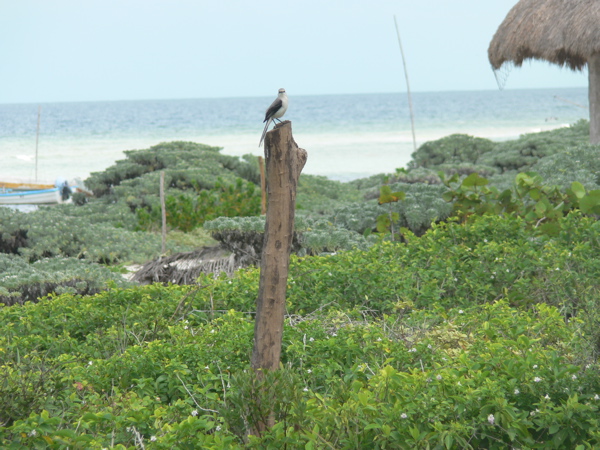
Larry identified it as a Tropical Mockingbird. This is very commom in this area and we soon learned to spot them as we drove along the coastal highway between San Bruno and Progreso.
1:44 PM Larry drove us about 5 km east and then we turned south on the road to Dzemul. The road passes through some lagoons and mangrove swamps that are teeming with Greater Flamingos as well as herons, egrets and shore birds. Not a great photo, but it is the first that I took showing the flamingos from the road side.
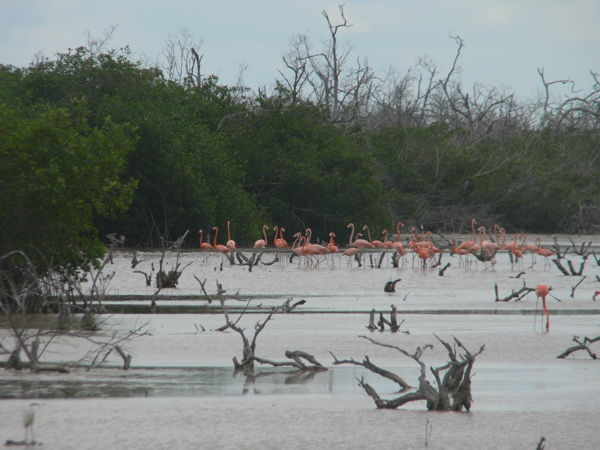
We parked the car on the side of the road and spent about an hour watching the birds through our binoculars and Larry's spotting scope. Here are a few more images taken at this time.
This is a Tricolor Heron, most easily identified by the white belly and rump.
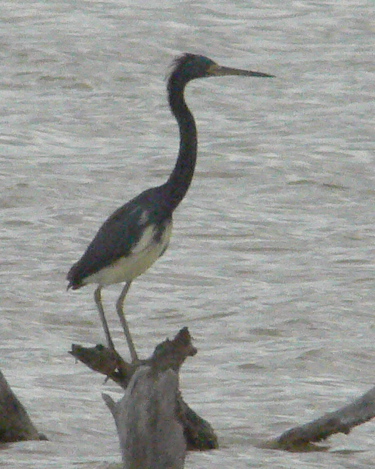
We also learned to identify the Reddish Egret, this time keying on the distinctive pink and dark tip of its beak.
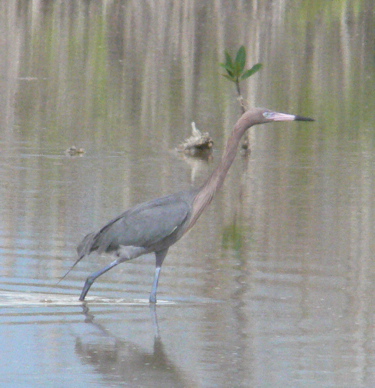
We saw a number of Snowy Egrets as well in this area. The black bill is a distinctive marker.
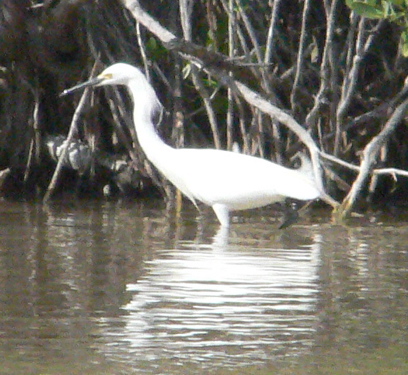
But the highlight was definitely the Greater Flamingos.
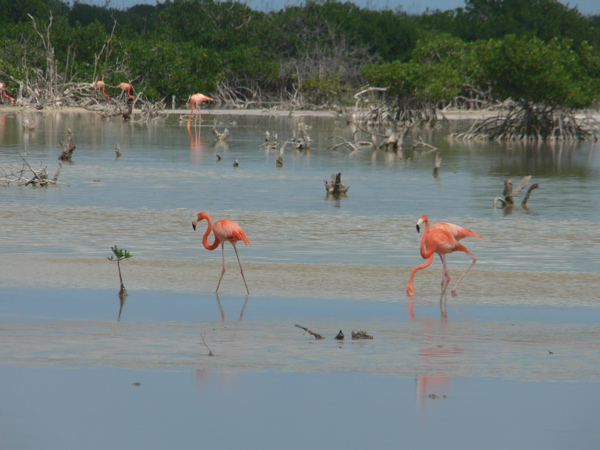
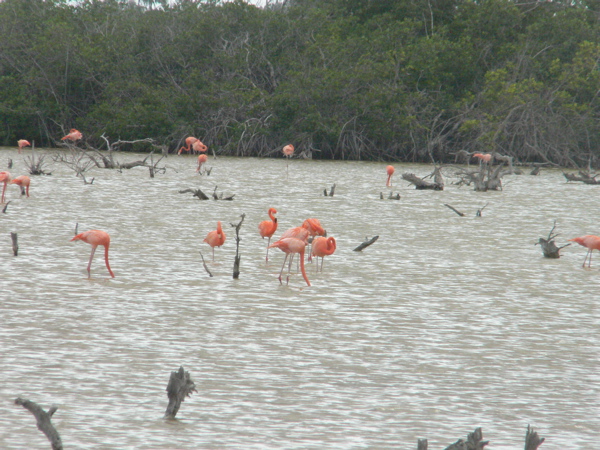
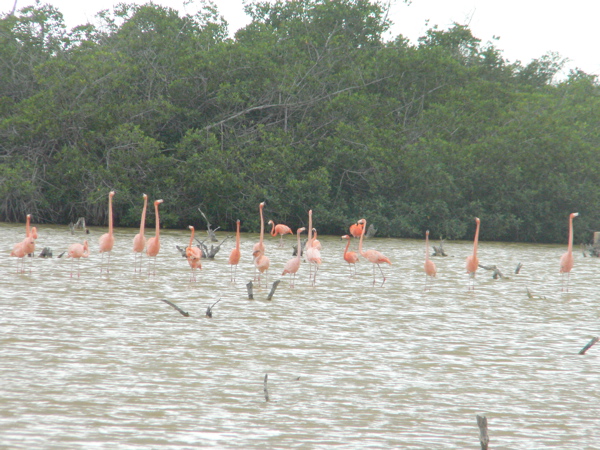
2:42 PM We then drove a few more kilometers to a small Mayan ruin site. As we drove up the narrow road to the ruins we spotted some black birds in the bushes, which Larry and Mary Ann both recognized as a Groove-billed Ani. Look at the beak on this bird!
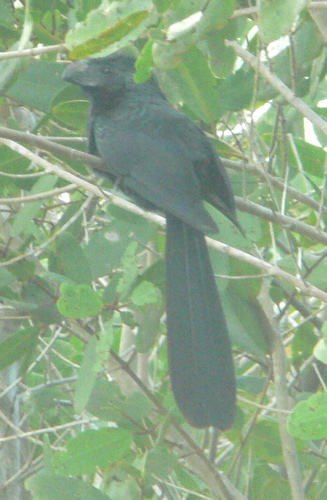
Before touring the site, but as soon as we left the car, we became diverted by a number of orioles. I was able to obtain photographs of both the Hooded Oriole and the Altamira Oriole.
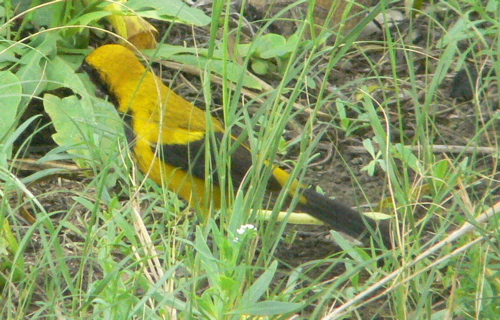 Hooded Oriole
Hooded Oriole
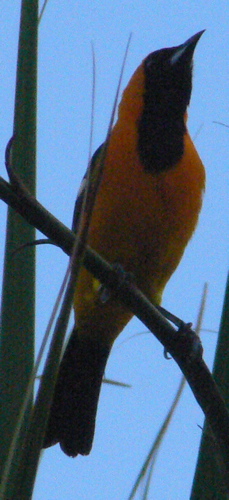 Altamira Oriole
Altamira Oriole
I was also able to obtain two relatively poor quality images of a Red-bellied Woodpecker and a Blue-gray Gnatcatcher.
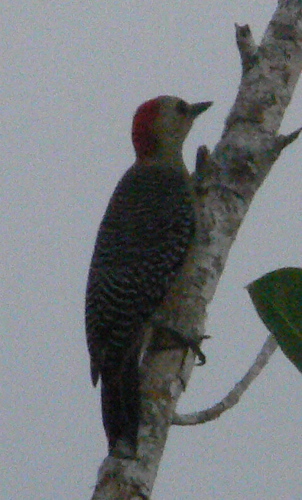 Red-bellied Woodpecker
Red-bellied Woodpecker
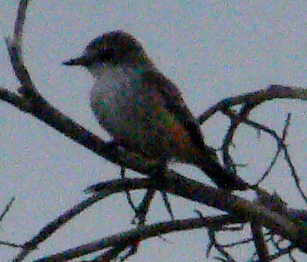 Blue-gray Gnatcatcher
Blue-gray Gnatcatcher
3:40 PM On the way back from the ruins we stopped and had another look at the flamingos.

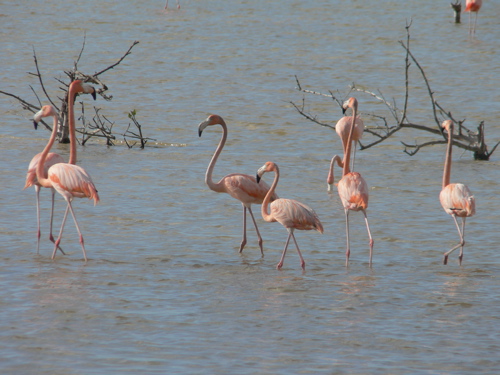
Here is a table summarizing the day's observations.
Name |
Photo |
Time |
Location |
ID# |
Lifer |
| Brown Pelican |
. |
8:00 am |
near unit |
1 |
Yes |
| |
|
|
|
|
|
| Black Vulture |
. |
10:00 am |
road to Chicxulub |
2 |
. |
| Crested Caracara |
. |
. |
" |
3 |
Yes |
| Black-necked Stilt |
. |
. |
" |
4 |
Yes |
| Belted Kingfisher |
. |
. |
" |
5 |
. |
| |
|
|
|
|
|
| Laughing Gull |
. |
. |
near unit |
6 |
Yes |
| Royal Tern |
. |
. |
" |
7 |
Yes |
| Tropical Mockingbird |
Yes |
11:30 am |
" |
8 |
Yes |
| |
|
|
|
|
|
| Greater Flamingo |
Yes |
11:40 am |
road to Dzemul (Flamingo Road) |
9 |
Yes |
| Reddish Egret |
Yes |
. |
" |
10 |
Yes |
| Dunlin |
Yes |
. |
" |
11 |
. |
| Great Blue Heron |
Yes |
. |
" |
12 |
. |
| Tricolored Heron |
Yes |
. |
" |
13 |
Yes |
| Great Egret |
Yes |
. |
" |
14 |
. |
| Snowy Egret |
Yes |
. |
" |
15 |
. |
| |
|
|
|
|
|
| Groove-billed Ani |
Yes |
12:40 PM |
Xcambo Mayan ruins |
16 |
Yes |
| Altimira Oriole |
Yes |
. |
" |
17 |
Yes |
| Hooded Oriole |
Yes |
. |
" |
18 |
Yes |
| Red-bellied Woodpecker |
Yes |
. |
" |
19 |
Yes |
| Blue-grey Gnatcatcher |
Yes |
. |
" |
20 |
Yes |
SUMMARY of the session: We saw a total of 20 new birds, 14 of which were lifers. An incredible way to begin our holiday!
|